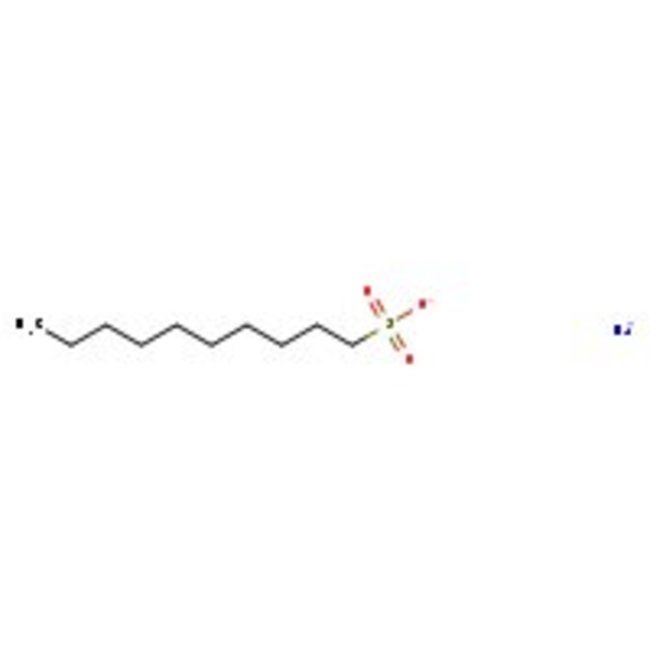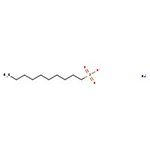Search Thermo Fisher Scientific
Thermo Scientific Chemicals
Sodium 1-decanesulfonate, 99%
CAS: 13419-61-9 | C10H21NaO3S | 244.325 g/mol
Catalog number ALFA14638.22
Price (MYR)
4,862.00
EA
Quantity:
100 g
Price (MYR)
4,862.00
EA
Specifications
Chemical Name or MaterialSodium 1-Decanesulfonate
CAS13419-61-9
Melting Point>300°C
Storage Note 1Hygroscopic
Recommended StorageAmbient temperatures
View more
Ion-associating reagent for HPLC, useful for analysis of peptides and proteins.Sodium 1-decanesulfonate is used as a base in coupling reactions such as Suzuki coupling. It is used as an ion-associating reagent for HPLC and involved in the analysis of peptides and proteins. It is used to study the mechanism of guanidine compounds on a porous graphite carbon and electro reduction of Zn2+ ions.
This Thermo Scientific Chemicals brand product was originally part of the Alfa Aesar product portfolio. Some documentation and label information may refer to the legacy brand. The original Alfa Aesar product / item code or SKU reference has not changed as a part of the brand transition to Thermo Scientific Chemicals.
Applications
Ion-associating reagent for HPLC, useful for analysis of peptides and proteins.Sodium 1-decanesulfonate is used as a base in coupling reactions such as Suzuki coupling. It is used as an ion-associating reagent for HPLC and involved in the analysis of peptides and proteins. It is used to study the mechanism of guanidine compounds on a porous graphite carbon and electro reduction of Zn2+ ions.
Solubility
Soluble in water.
Notes
Hygroscopic. Incompatible with strong oxidizing agents.
Ion-associating reagent for HPLC, useful for analysis of peptides and proteins.Sodium 1-decanesulfonate is used as a base in coupling reactions such as Suzuki coupling. It is used as an ion-associating reagent for HPLC and involved in the analysis of peptides and proteins. It is used to study the mechanism of guanidine compounds on a porous graphite carbon and electro reduction of Zn2+ ions.
Solubility
Soluble in water.
Notes
Hygroscopic. Incompatible with strong oxidizing agents.
RUO – Research Use Only
General References:
- Postenyi, Z.; Tekes, K.; Toth-Molnar, E.; Kalasz, H. HPLC analysis of blood-brain barrier penetration of 4-fluorodeprenyl. J. Pharm. Biomed. Anal. 2015, 102, 529-534.
- Kovalchuk, N. M.; Barton, A.; Trybala, A.; Starov, V. Mixtures of catanionic surfactants can be superspreaders: Comparison with trisiloxane superspreader. J. Colloid Interface Sci. 2015, 459, 250-256.



